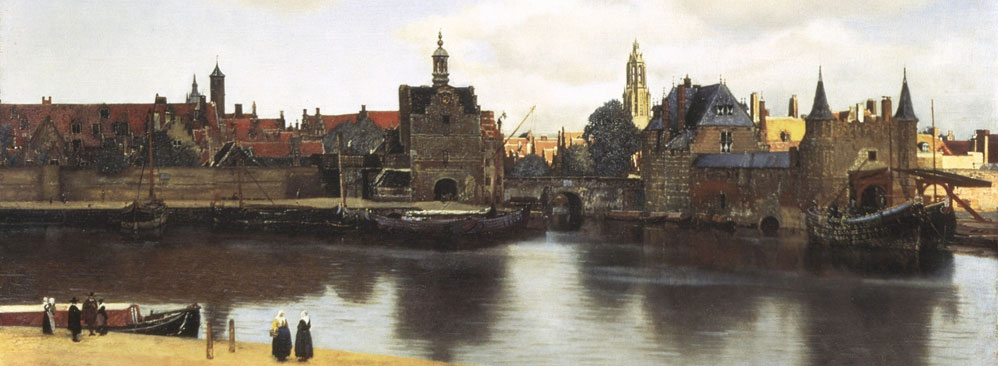News
Special Viewings of Dutch and Flemish Drawings at the Cooper-Hewitt
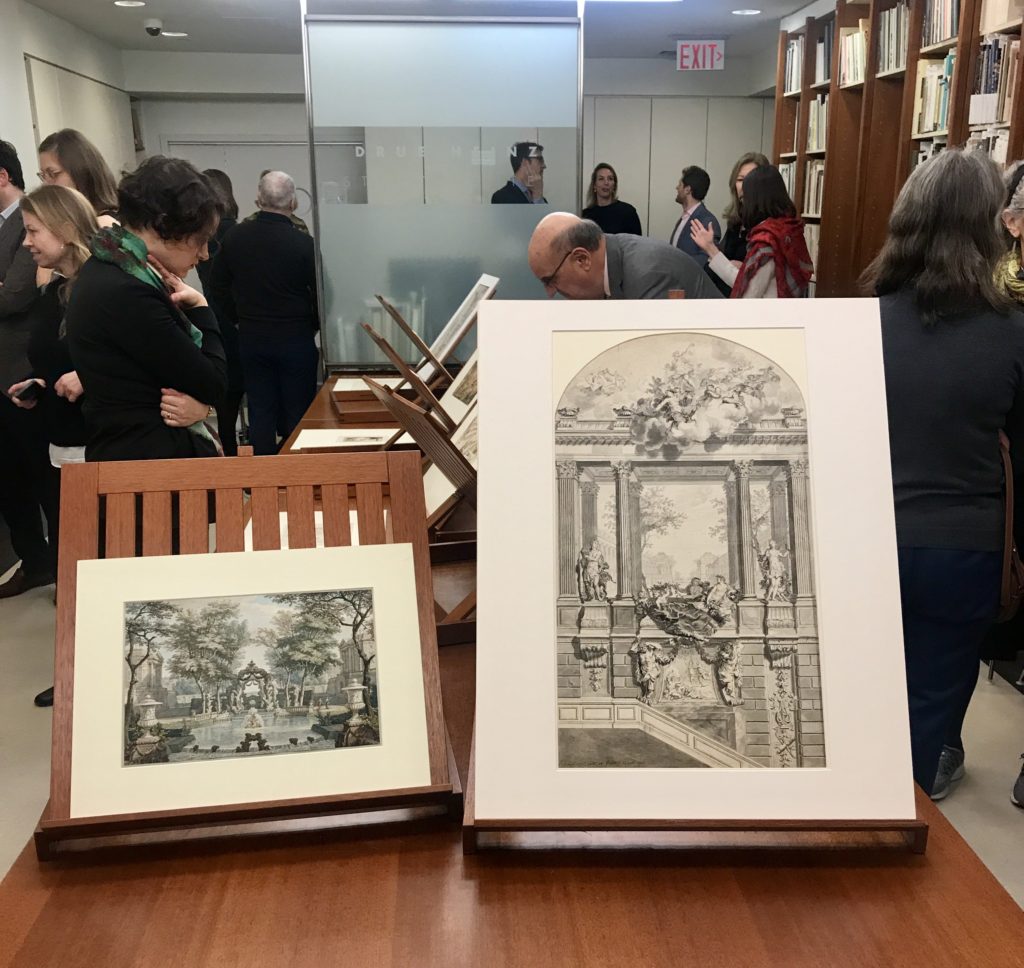
On January 30th, the American Friends of the Mauritshuis were warmly welcomed by the Prints and Drawings Department of the Cooper-Hewitt for a tour of their rarely viewed collection of Dutch and Flemish Drawings.
Curator Julia Siemon hosted fifteen Friends through a tour of some of the highlights of the collection started by the Hewitt sisters in the 1890’s and added to through donor gifts over the past century. While the Drawings Collection is perhaps most well-known for French and Italian drawings, there are outstanding examples of Netherlandish drawings by such figures as Abraham Blomaert, Isaac de Moucheron, Bartholomeus Breenburgh, Jacob Jordaens, Marten de Vos, and Jacob Backer among others.
We plan for more special viewings of both public and private collections in the future. To be sure to be included on these invitations lists, please be sure to renew your American Friends of the Mauritshuis membership.
For those Members interested in finding out more about the Cooper-Hewitt collections, we encourage you to contact the Drue Heinz Study Center to find out more.
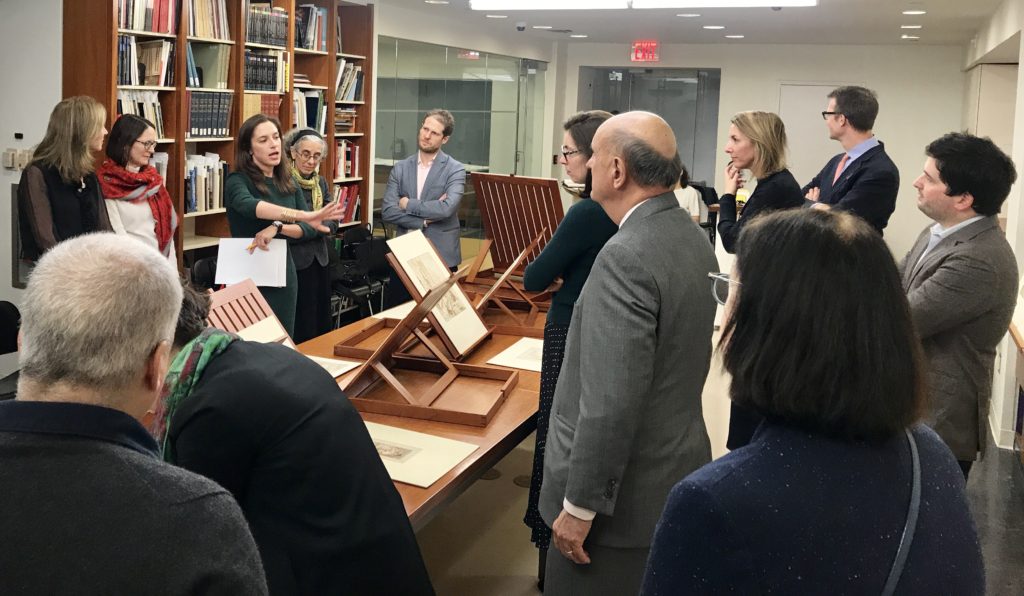
Announcing Important Changes
Dear Friends,
It is only June, but a lot has been happening this summer, and I am writing on behalf of the Board of the American Friends of the Mauritshuis (AFMh) to keep you informed of a few important changes.
First, there are a couple of moves within the Board that have been in the works for some time. After serving as President for the past four years, Mona Sadler is stepping down. She has achieved a great deal and we are deeply grateful to her for her graceful leadership. Mona will remain a very active member of our Board. I am sure that you will all wish to join me in thanking her for her outstanding service to our organization.

We are all delighted that Stein Berre has offered to take over as President as of June 13th. Stein is a Senior Vice President of the Federal Reserve Bank of New York and is a collector of paintings and drawings of the Dutch Golden Age. He has held Board memberships at the Royal Oak Foundation and as a Trustee for the Murray Hill Historic District in NYC as well as at the AFMh.
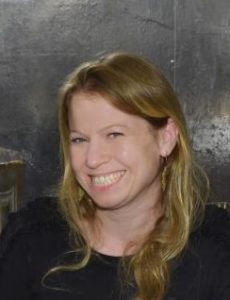
We are also very pleased to announce that Alison Dichter will be joining us as the AFMh Administrative Director. Alison brings energy and entrepreneurship to this new role. In addition to running her own casting agency in New York City, Alison also helps support the Boards of the American Friends of the Louvre and the Royal Oak Foundation on events, membership and development. I hope you’ll all have a chance to meet her at a future event.
Our mailing address is changing, so please update your address books. Going forward, please send all correspondence to:
American Friends of the Mauritshuis
114 East 36th Street
3rd Floor
New York, NY 10016
For those of you we may have missed with the Summer appeal email, we encourage you to donate to help secure funding for an exciting new exhibition about conservation at the Mauritshuis, which will feature projects taken on by AFMh Interns. We also hope that you will help ensure the future of our AFMh-Fulbright Internship. If you plan to send a check, please use the new address. If you have already sent a donation to the old address, don’t worry, it will still get to us.
Lastly, we are working on an exciting Fall event for the AFMh in New York City. Please keep your calendars free on the evening of October 30th. I look forward to seeing you there!
All best wishes from The Hague,
Emilie
2019 Summer Appeal
Dear Friend,
On behalf of the Board of Directors of the American Friends of the Mauritshuis, I am delighted to share some news about recent developments at the museum and some exciting upcoming projects. At the same time, we hope that you will take a moment to renew your membership in the American Friends of the Mauritshuis and help spread the word about our mission and impact!
The Mauritshuis had a busy and productive 2018, punctuated by special events that captured the public imagination. The museum presented several innovative projects, from the conservation of the Girl with a Pearl Earring, accomplished in full public view, to the launch of “Meet Vermeer,” an Augmented Reality app created in collaboration with Google Arts & Culture and twenty-six other collections. It was also an exceptional year for acquisitions, with seven additions to the collection. And the Mauritshuis presented three exhibitions in 2018, including the critically acclaimed Jan Steen’s Histories, to which the American Friends made a significant contribution. We are off to another strong in 2019 – with attendance up significantly over last year, partly thanks to a special Rembrandt exhibition. I hope you’ve been able to follow along in the Mauritshuis in Focus. By the way, translations in the magazine are also made possible by our American Friends.
This year the American Friends also provided essential support for the Fulbright-American Friends of the Mauritshuis Grant. Kathryn (Kat) Harada is thrilled to be the 2018-2019 American Friends of the Mauritshuis/Fulbright Fellow in Paintings Conservation at the Mauritshuis. Kat graduated from Smith College in 2008 with a BA in Art History and Italian and earned an M.A. and a Certificate of Advanced Study in Art Conservation from SUNY Buffalo State College in 2017. She worked as a pre-program conservation intern at Shangri La, Doris Duke’s former residence in Honolulu before pursuing her studies in Buffalo. During her graduate training, she focused on the research and treatment of Old Master to 19th century painting and held internships at the Williamstown Art Conservation Center, Boston Museum of Fine Arts, and the National Gallery of Art. Kat came to The Hague from Los Angeles, where she was completing a post graduate internship year at the J. Paul Getty Museum. Her main project at the Mauritshuis is the restoration and research of two pendant portraits by Nicolaes Maes, which will be exhibited in the permanent collection at the same time as the museum presents a Maes exhibition this Fall. The American Friends play a vital role in this Fulbright fellowship grant, enabling the next generation of conservators to develop in their profession.

We are now seeking support for a very special exhibition, which will bring our organizations even closer together. The museum plans to organize a show during the summer of 2020 about conservation: why, how and when are paintings treated? The conservation studio, under the eaves of the Mauritshuis, is not open to the public, but this exhibition will let visitors in on the “secret,” and elucidate the often dramatic transformation that the paintings undergo during treatment. One of the paintings to go on display is a still life by Cornelis de Heem, which was treated by the first Fulbright-American Friends of the Mauritshuis Fellow, Ellen Nigro. Another story in the show is about the very special frame, made possible by the American Friends, for Rembrandt’s Susanna. Exhibitions such as this, even ones that draw largely on the museum’s own collection, are expensive to organize, especially to the very high standard that the Mauritshuis has set. Our target is to raise $25,000, which will go a long way to enabling us to realize this special project. We understand that you must have many interests and obligations, but hope that you will consider offering additional support to make possible this “behind-the-scenes” view of the art of conservation.

In the meantime, we hope that we can count on you to renew your membership with the American Friends of the Mauritshuis. All contributions are fully tax deductible, in keeping with the IRS guidelines for accredited 501(c)(3) organizations in the United States.
Please note our address has changed to: 1E 53rd Street, 8th floor, New York, NY 10022.
On behalf of the members of the Board of the American Friends of the Mauritshuis, thank you again for your steadfast partnership as we continue to provide support for and create even greater awareness of the Mauritshuis in the United States. I think we all agree that it is a very special museum and one that not only deserves to be better known, but also one that is more than worthy of our ongoing support.
With gratitude and friendship,

Monica Sadler
President
2018 Fall Appeal
Dear Members,
On behalf of the Board of Directors of the American Friends of the Mauritshuis, I welcome this opportunity to share with you our progress over the past year. We are deeply grateful for your valuable friendship and commitment to joining our efforts in promoting and supporting this artistic jewel of The Netherlands.
As you may remember, we entered into a collaboration with the prestigious Fulbright Program in 2016. We have been making great progress this past year in raising funds for a dedicated endowment in support of this important fellowship program. Thanks to some of our most loyal donors, we are now more than half way toward our goal of raising $500,000 which will support the continuance of the fellowship for years to come. We hope we can count on your ongoing support, and if you would like to make an extra tax-exempt donation to our Fulbright Program as the year prepares to draw to a close, please reach out to me directly at monasadler at aol.com.
You will be delighted to know that the Mauritshuis has enjoyed another successful year. With the recent opening of a new exhibition, National Trust – Dutch Masters from British Country Houses, twenty-two paintings from twelve National Trust houses are now on view. Never before has such a large group of Dutch paintings owned by the National Trust traveled outside the United Kingdom. If your travels during the holidays bring you to or near The Hague, please don’t miss this spectacularly-designed exhibition which will be on view until January 6, 2019.

The New Year 2019 marks the 350th anniversary of Rembrandt van Rijn’s death. This specially-designated “Rembrandt Year” will be marked by special events and exhibitions honoring this pre-eminent Dutch Master throughout the Netherlands. The Mauritshuis has one of the world’s most renowned collections of paintings by Rembrandt and will exhibit all of the paintings that are part of the permanent collection attributed to Rembrandt. Next October, the Mauritshuis will also present the first-ever retrospective of paintings by Nicolaes Maes – considered Rembrandt’s most talented pupil. The exhibition will include a very special painting by Rembrandt, The Sacred Family, which will be on loan from the legendary Hermitage in St. Petersburg, Russia. This work not only makes clear the very special connection between Maes and Rembrandt, but it has special relevance in this Rembrandt Year.
Our new Fulbright Fellow Kathryn Harada will be contributing to this project by researching and conserving two portraits by Maes from the Mauritshuis’s permanent collection.


17 October 2019 – 19 January 2020 – The Mauritshuis presents an exhibition on Nicolaes Maes, one of Rembrandt’s most talented pupils, in the autumn of 2019. This is the first retrospective exhibition of this painter from Dordrecht. Maes started his career painting biblical representations, which clearly show his master´s influence. In subsequent years he painted intimate domestic scenes, which usually focussed on women engaged in household chores. Beginning in the 1660s, Maes developed an elegant style of portraiture that was popular with his clients in Dordrecht and Amsterdam. Featuring over thirty paintings the exhibition shows all aspects of Maes’s varied oeuvre.
Thank you for your continued appreciation of the importance of the Mauritshuis, as one of today’s most important and renowned museums. Your support makes such a difference in our ability to promote its continued relevance and appeal to art lovers not only here in the United States but internationally. We look forward to sharing our continued progress. With best wishes to you and yours for a wonderful holiday season and New Year!
Sincerely,
![]()
Monica S. Sadler
President
AFMh Newsletter July 2018
Fulbright – American Friends of the Mauritshuis Grant
By Ellen Nigro
When I learned I was awarded the American Friends of the Mauritshuis-Fulbright Grant, I couldn’t have been more excited. The opportunity to live and study in The Netherlands while I finished the last year of my Master’s in the Winterthur/University of Delaware Program in Art Conservation (WUDPAC) was something I’d dreamed of for a long time. The conservators at the Mauritshuis do exceptional research and treatments, and I knew the chance to spend a year learning from them would be unique.
During my internship in the conservation studio, I have focused my time on the painting Fruit Still Life by Cornelis de Heem (inventory number 0050), which normally hangs in the Gallery Willem V. It is a lovely painting featuring a stone plinth piled high with oranges, lemons, peaches, grapes, chestnuts, and medlars. The fruit is precariously balanced, ready to tumble out of the picture plane.
This painting was chosen for treatment because of the thick layers of yellow varnish that had been added to the surface over many decades, which left the colors out of balance and obscured many of the details that make this painting so special. During the treatment, the beautiful luminosity of the painting was restored, and the subtle brushwork and texture on the surface were freed from the surface coatings. With the varnish removed, I was able to see that the painting is in incredible condition with very few losses and abrasions. This painting is truly an exceptional example of de Heem’s work.
From a research perspective, this painting was especially engaging because Cornelis de Heem is an understudied artist and there were opportunities for discovery. Through my research, I identified the ground as one very similar to that in the Pellegrini cycle in the Golden Room of the Mauritshuis. This information tells us the painting was created in The Hague when the artist lived there in the late 1670s and the early 1680s, an important discovery for this undated painting. I was also able to study fourteen other paintings by de Heem in collections in Germany, Belgium, and England, which provided an amazing opportunity for comparison across his oeuvre.
In addition to the wonderful project I had in the Mauritshuis studio, I completed small treatments on two other paintings in the collection, participated in regular gallery checks, and did courier trips to various institutions in Holland. My time outside of the museum was filled with opportunities travel, conferences, and following workshops with my peers in the University of Amsterdam/Stitchting Restauratie Atelier Limburg (UvA/SRAL) program in paintings conservation.
This year has been an incomparable experience full of learning and growth, which would not have been possible without the support of the American Friends of the Mauritshuis and the J. William Fulbright Foundation. The backing of these institutions has helped me become a better conservator by providing an opportunity to work within a world-class museum under incredible mentorship, and I will fondly look back on my time at the Mauritshuis.
Rogier van der Weyden Unveiled
Beginning June 14, 2018, The Lamentation of Christ (c.1460-1464) by Rogier van der Weyden will be restored in a specially built studio in the exhibition space of the Mauritshuis.
The Lamentation is the oldest painting in the Mauritshuis and the only work by the Flemish master in a Dutch museum. Visitors will discover the technical and art historical research into the painting. A rare loan from the Galleria degli Uffizi in Florence will also be on view. Not only will the treatment recover the magnificent colours with which the masterpiece was painted, but the Mauritshuis also expects to learn more about the artwork’s history.
Order your e-tickets here.

Public Restoration
The Lamentation of Christ needs to be restored, because the painting’s varnish has yellowed over the course of many years. As a result, the work’s bright colours no longer come into their own. The treatment will remove previous restorations (retouches), which have also discoloured over time. The restoration, which is expected to be completed at the end of 2018, will reveal the masterpiece’s original, radiant colours.
The project will be carried out in full public view by a team of specialists from the Mauritshuis; it will offer a rare glimpse behind the scenes of a conservation studio. Visitors will be eye-witnesses to the process of restoration and its results. The presentation will offer background about the many aspects of technical research, such as: infrared research (which offers information about, for example, the underdrawing); X-rays; and the analysis of paint samples. The display will also offer arthistorical background about the painting, answering questions such as: who was Rogier van der Weyden and for whom could he have painted this altarpiece?
The Mauritshuis has a venerable tradition of conducting restoration projects in public. Vermeer’s Girl with a Pearl Earring and his View of Delft were both treated in a specially built studio in 1994. Carel Fabritius’s Goldfinch was researched and restored in public in 2004. Jan Steen’s Doctor’s Visit followed in 2011. The Mauritshuis presented the results of a long-term research and restoration project into Rembrandt’s Saul and David in the 2015 exhibition entitled Rembrandt? The Case of Saul and David. In the spring of 2018, Vermeer’s Girl with a Pearl Earring underwent technical research in a temporary studio in the museum’s Golden Room. These projects aim to involve visitors to the Mauritshuis in a crucial, but often hidden, aspect of the museum’s core activities: the care and research of the collection.
Working hours conservators
The conservators are working in the studio every day from 1 – 3 p.m. On many days, they’re also present from 10 a.m. – 12 p.m. Every day from 3 – 3.30 p.m. there is a possibility to ask questions.
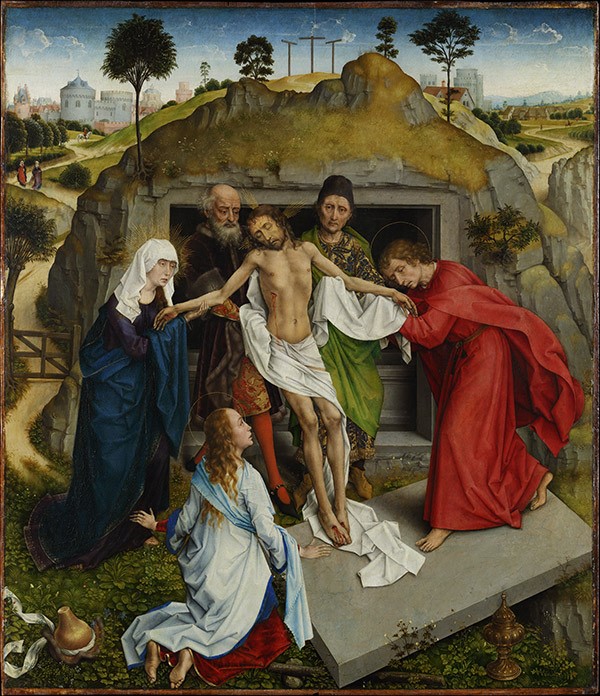
Two Altarpieces Reunited
The presentation includes a very special loan: Roger van der Weyden’s Entombment of Christ (1460-1464). This painting, from the Galleria degli Uffizi in Florence, will be on show for the first time in the Netherlands. The two altarpieces have only once before been on display together in an exhibition, and then briefly.
The painting technique of the Van der Weyden from the Uffizi is similar to that of the Mauritshuis Lamentation. This is also true for the preparatory drawing under the paint surface. There are also significant differences: the execution and detailing of the Uffizi painting are in some respects more refined. We also know more about the Italian patron of the Van der Weyden from Florence, whereas the donor on the Mauritshuis panel (the kneeling bishop) is still unknown. The comparison of the two works in the presentation will be revealing.
Flemish Master
Rogier van der Weyden (1399 – 1464) is considered the most important Flemish painter of his time after Jan van Eyck (1390-1441). Both masters were innovative, mainly due to the development of oil painting. By applying thin layers of transparent oil paint over each other on a light surface, they achieved an unprecedented intensity of colour. The technique also made it possible to paint with a smooth brush, which allowed the Flemish painters to work much more precisely than ever before. They located Biblical scenes in settings from their native countryside, which they depicted with an abundance of naturalistic details. Jan van Eyck was unparalleled in his ability to create his crystal clear images that seem entirely realistic. Rogier van der Weyden added an important element to that naturalism: he painted emotions. His characters are moved to tears, cover their eyes or wring their hands as an expression of grief. Such emotions are very present in the Mauritshuis’s Lamentation.
The Lamentation of Christ
Immediately after the death of Christ, he was taken down from the cross and mourned. At the heart of the image, Mary kneels down in tears with her dead son, supported by the apostle John and surrounded by Biblical figures who were traditionally thought to have been present at that moment. A bishop, who must have commissioned the painting, kneels at the feet of Christ. The Lamentation of Christ takes place in a green, hilly landscape with Jerusalem in the distance. The walled city and the other buildings in the background have little to do with the Holy Land; the gate buildings, the castle with stepped gables and the dovecote on the right look Flemish.
The Lamentation of Christ was purchased in 1827 for 3,000 guilders by order of King William I. It is the only painting by Van der Weyden in a Dutch museum. It was acquired as a work by Hans Memling, but was ultimately attributed to Rogier van der Weyden. As is often the case, the workshop had a large share in the execution of the painting.
Support
The exhibition Rogier van der Weyden Unveiled is made possible with the support of the estate Mr and Mrs Schoufour-Martin.
For more information, click here.
AFMh News June 2018
New AFMh Board Members
The American Friends of the Mauritshuis is pleased to announce the election of three new Board members. The new Board members—with their varied backgrounds—further extend the AFMh’s Board expertise across a range of disciplines including curating, collecting, arts management, non-profit and museum leadership, philanthropy, Dutch-American relations, business, finance and more. We are delighted to welcome the following new members:
Stein Berre, Vice President of the Federal Reserve Bank of New York
To view Stein Berre’s profile, click here.

Freddy Boom, Head North America for Industrials, Services & Transportation, Global Banking at Standard Chartered Bank, based in New York
To view Freddy Boom’s profile, click here.

Adam Eaker, Assistant Curator of European Paintings, Metropolitan Museum of Art, New York
To view Adam Eaker’s profile, click here.
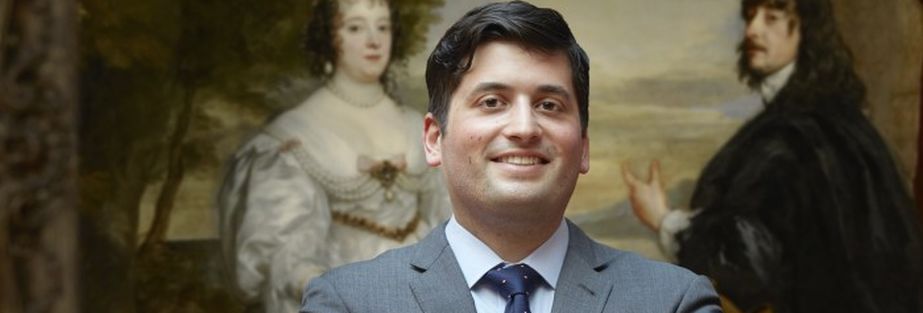
The AFMh thanks its Board members stepping down at the end of 2017:
Otto Naumann
Peter Sutton
Fay Hartog Levin Receives Royal Decoration

The Ambassador of the Kingdom of the Netherlands Henne Schuwer presented AFMh Board member and former US Ambassador Fay Hartog-Levin a royal decoration and inducted her as an officer into the Order of Orange Nassau for her longstanding commitment to strengthening the bilateral relationship between the Netherlands and the United States.
To read more, click here.
2018/19 AFMh-Fulbright Fellow
The AFMh is pleased to announce its new Fulbright Fellow, Kathryn Harada.
Kathryn (Kat) Harada is thrilled to be the 2018-2019 American Friends of the Mauritshuis/Fulbright Fellow in Paintings Conservation at the Mauritshuis. Kat graduated from Smith College in 2008 with a BA in Art History and Italian, and earned an M.A. and a Certificate of Advanced Study in Art Conservation from SUNY Buffalo State College in 2017. She worked as a pre-program conservation intern at Shangri La, Doris Duke’s former residence in Honolulu before attending Buffalo. During her graduate training, she focused on the research and treatment of Old Master to 19th century painting and held internships at the Williamstown Art Conservation Center, Boston Museum of Fine Arts, and the National Gallery of Art. Kat will be moving to Den Haag from Los Angeles, where she is currently completing a post graduate internship year at the J. Paul Getty Museum. There, she is working on two Italian panel paintings, a 14th century Taddeo Gaddi and a 17th century Giulio Cesare Procaccini. Additionally, she is studying a painting on cardboard by 19th century French artist, Henri de Toulous-Lautrec. Kat loves to work on challenging treatments, and is especially interested in artists’ materials, and the ethics and impact of historic restoration practice on Old Master paintings. Kat is very excited to work with and learn from the exceptional paintings conservators at the Mauritshuis and to collaborate with students and researchers at the University of Amsterdam during her Fellowship year in the Netherlands, and is very grateful to the American Friends of the Mauritshuis for their generous support of this opportunity.
For more information about the Fulbright-American Friends of the Mauritshuis award, please click here.

Jan Steen’s Histories
In the recently closed exhibition, Jan Steen’s Histories, at the Mauritshuis presented a selection of Jan Steen’s finest history paintings. This seventeenth-century Dutch artist is best known as a painter of chaotic and disorderly scenes of everyday life, which gave rise to the popular Dutch proverb ‘a Jan Steen household’. But he also painted very different subjects: stories from the Bible, classical mythology and antiquity. On view at the Mauritshuis from 15 February until 13 May 2018, this stellar exhibition was supported by the American Friends of the Mauritshuis. AFMh Board member Dr. Mariët Westermanncontributed to the catalogue.

To view the posting in the Apollo Magazine, click here.
For more information on the exhibition at the Mauritshuis, click here.
AFMh Launches New Website

The American Friends of the Mauritshuis are pleased to announce the launch of the new website, afmauritshuis.org. The website offers a cleaner, more contemporary look, as well as greater reliability. By enabling AFMh to directly update content of the site, and by including an event registration module the cost of operating the website will be reduced.
The new site accommodates on-line member donations at prescribed levels and online payments of any amount. The website was built by Jos and Martin Scheffelaar of Scheffelaar Consulting LLC of Boston, in coordination with the marketing department of the Mauritshuis in the Netherlands.

Former Mauritshuis interns attend 45th Annual Meeting of the American Institute for Conservation of Historic and Artistic Works in Chicago – From left: Megan Salazar Walsh (2013-14), Laura Hartman (2012-13), Ellen Nigro (2017-18), Julie Ribits (2015-16) and Dina Anchin (2011-12). Missing: Lauren Bradley (2010-11).
Archived News
2015-2017
2014
2014 The Splendor of a Golden Age Newsletter
2014 Private Tour of The Bruce Museum Newsletter
2014 Frieze Masters Newsletter
2014 ‘The Goldfinch’ in The New York Times Newsletter
Summer 2014 Newsletter
Spring 2014 Newsletter
2014 Reception & talk by Laura Hartmann Newsletter
2013
2013 Frick Newsletter
2013 Vermeer, Rembrandt, and Hals Newsletter
2013 Lecture by Edwin Buijsen Newsletter
2013 Walter W.S. Cook Annual Lecture Newsletter
Fall 2013 Newsletter
Summer 2013 Newsletter
Spring 2013 Newsletter
“Captivating ‘Girl’ beckons at de Young,” San Francisco Chronicle and SFGate.com January 13-19, 2013, pp. 14-17.
2012
Fall 2012 Newsletter
Spring 2012 Newsletter
2011
Winter 2011/2012 Newsletter
Fall 2011 Newsletter
Summer 2011 Newsletter
Spring 2011 Newsletter
2010
Winter 2010/2011 Newsletter
Fall 2010 Newsletter
Spring/Summer 2010 Newsletter
2009
Winter 2009/2010 Newsletter
Fall 2009 Newsletter
Summer 2009 Newsletter

